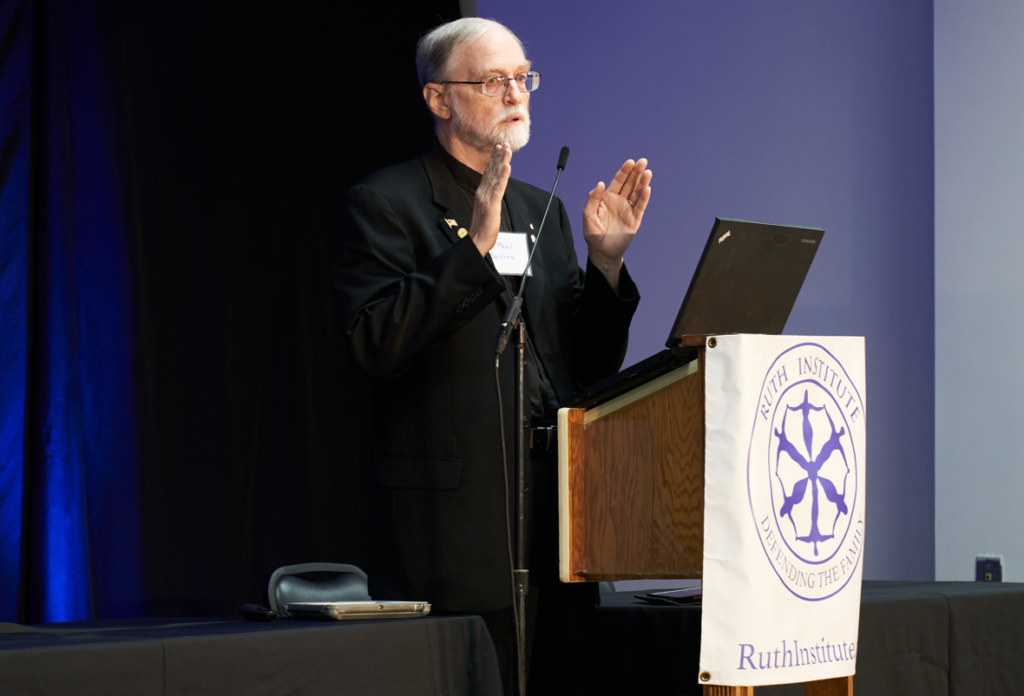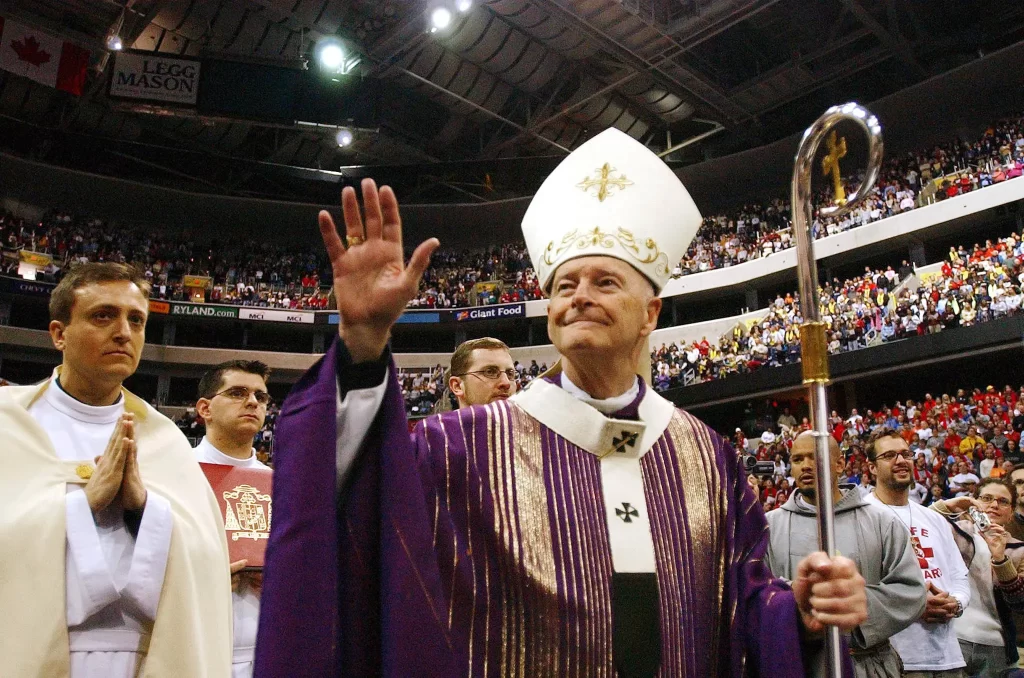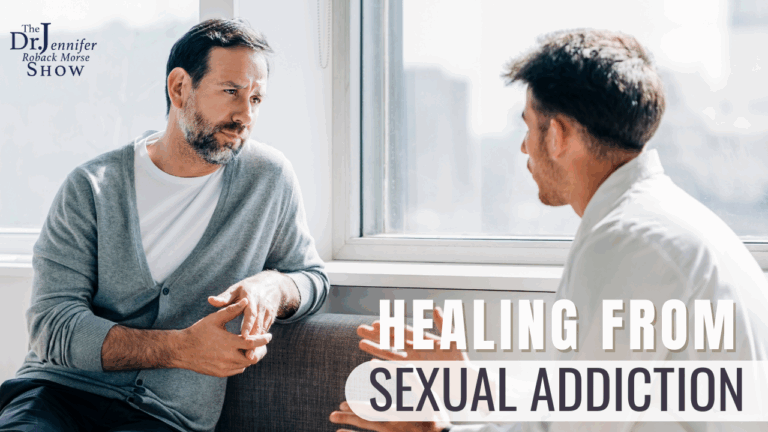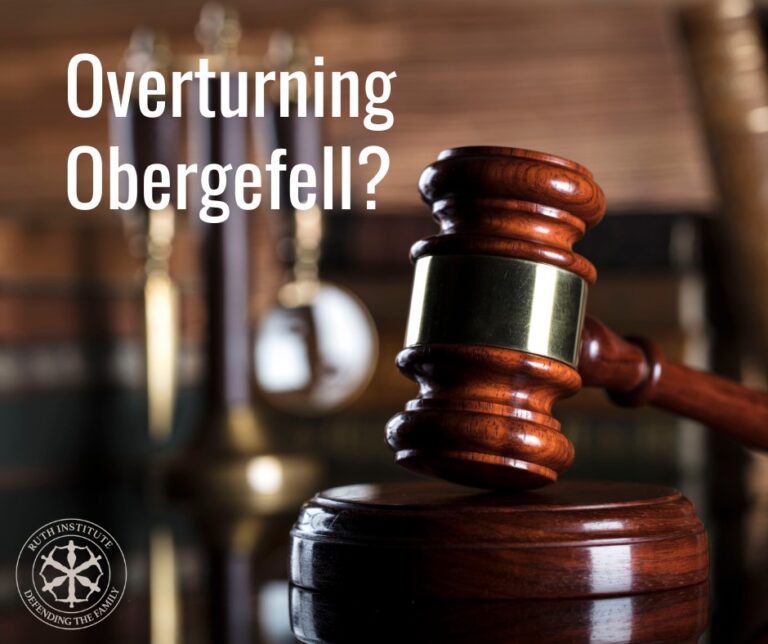
Fr. Paul Sullins, Ph.D., Research Associate of the Ruth Institute, Answers Questions on The Clergy Sex Abuse Scandal
Is the current Catholic clergy sex abuse scandal related to homosexuality?
Yes. The current scandal includes mostly revelations about male on male sexual abuse of seminarians, where the victims are adults. These kinds of cases were not even considered in the responses to the 2002 scandal, which was about the criminal abuse of minors.
Was the 2002 scandal also related to homosexuality?
The US Conference of Catholic Bishops commissioned two reports, one in 2004 and in 2011, by the John Jay College of Criminal Justice to study the reported cases of clerical sex abuse from 1950 through 2002 and 2010 respectively. Both reports found that over 80% of the victims were neither girls, nor pre-pubescent children (true pedophilia), but pre-teen and teenage boys. These results clearly indicate that the problem was male on male predation by priests against under-aged boys.
Is there a “homosexual subculture” which exists within certain Catholic institutions?
Yes. In a 2002 survey of a national sample of 1,852 Catholic priests by the Los Angeles Times, 44% responded”yes” when asked if there was a “homosexual subculture in your diocese or religious institute”. To the question, “In the seminary you attended, was there a homosexual subculture at the time?” 53% of recently-ordained priests responded “Yes” (reported in Hoge and Wenger, Evolving Visions of the Priesthood, p. 102. Their own concurrent survey yielded 55% “Yes” to the identical question.)
Books by former seminary rector Donald Cozzens and psychologist Richard Sipe have described how such subcultures encourage and cover up sexual misconduct. Predatory priests and superiors can abuse the confessional by grooming victims who confess sexual temptations. Grossly immature priests are clueless about the extent of the harm they are causing. Cozzens, who writes from firsthand experience, relates that sexually active homosocial groups were at times so dominant that heterosexual men felt that they did not fit in, and left the seminary.
Numerous reports from clergy and seminarians are coming out worldwide which confirm the existence of networks of homosexually active men who cover for each other.
How has this “subculture” contributed to patterns of abuse within the Church?
Sipe chronicles, from mental health records and public court documents, a culture of denial and cover-up by confessors, spiritual directors, faculty, and senior clerics. Sipes wrote presciently in 2011 about what he called the “Cardinal McCarrick Syndrome.” Powerful clerics, including bishops, escaped exposure and penalty even though everyone knew about their predatory behavior and abuse of power. The sense of entitlement shown by senior clerics to seminarians eerily parallels the situation of Hollywood executives to young actresses and actors.

Pictured: A family photograph of Cardinal McCarrick From the New York Times article.
Do these findings suggest that the time has come for the Church to relax its teaching on homosexual activity?
Actually, the exact opposite is true. These findings do not contradict Catholic teaching. The Church holds that homosexual acts are “intrinsically disordered”, which means they are inherently incapable of fulfilling the purpose of human sex relations, like blindness is inherently incapable of fulfilling the purpose of sight. Further, homosexual acts actively interfere with godliness and human well-being. Though individuals can achieve Christian maturity
through chastity, self-denial, and self-control, a homosexual inclination is not a recommendation for Church leadership. In fact, since 2005 Catholic norms have formally prohibited any known homosexual man from being ordained. Honestly, applying these norms consistently would have avoided a tremendous number of problems.
Isn’t it rank hypocrisy on the part of the Catholic Church, which seems to be dominated by homosexually active men, to continue to condemn homosexual practice?
Someone once said, “Hypocrisy is the tribute vice pays to virtue.” The failure to live up to the teachings does not prove anything one way or the other about the value of those teachings.
Is allowing priests to marry a potential solution to this problem?
Celibacy is not a scapegoat, and married priests are not a panacea. In my research on married priests, I found that married priests are statistically no less likely to engage in minor sex abuse as are celibate priests. At this point, we need to focus on removing abusers and enablers from positions of power. We can talk about other issues such as the discipline of celibacy once we’ve solved this problem.
In conclusion:
The Ruth Institute believes the facts show that:
- Children, not cardinals and bishops, exemplify the “greatest in the kingdom of God.” (Matthew 18: 1-5,10)
- Same-sex abuse has victimized children, seminarians, and innocent clergy.
- The effects of this victimization are serious, putting victims in peril of substantial harm, not just to their psychosexual development, but also to their relationship with God.
- The effects of this crisis vindicate Catholic teaching and show that sexual discipline is sound and life-giving.
- Catholics need their own “me too” movement. Victims need to be affirmed and supported, not ignored and stigmatized.
- Such a cleansing would be a blessing to the Church, and bring healing and restoration to its families.
You can access the first report here, as well as the second report, “Receding Waves” here.
About Fr. Sullins: The Rev. D. Paul Sullins, Ph.D., is a Senior Research Associate of the Ruth Institute. He recently retired as Professor of Sociology at the Catholic University of America, Washington DC. Dr. Sullins is a leader in the field of research on same-sex parenting and its implications for child development. He has written four books, including Keeping the Vow: The Untold Story of Married Catholic Priests, and over 100 journal articles, research reports, and essays on issues of family, faith, and culture.
He was ordained by Cardinal McCarrick in 2002, during the height of the sex abuse crisis of that year. Fr. Sullins feels a profound sense of personal disappointment and betrayal, along with a desire to see holiness and trust restored in our hierarchy.
About the Ruth Institute
The Ruth Institute is a global non-profit organization, leading an international interfaith coalition to defend the family and build a civilization of love.
Jennifer Roback Morse has a Ph.D. in economics and has taught at Yale and George Mason University. She is the author of The Sexual State and Love and Economics – It Takes a Family to Raise a Village.
To get more information or schedule an interview with Dr. Morse, contact media@ruthinstitute.org.





